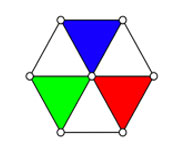


 تاريخ الرياضيات
تاريخ الرياضيات
 الرياضيات في الحضارات المختلفة
الرياضيات في الحضارات المختلفة 
 الرياضيات المتقطعة
الرياضيات المتقطعة
 الجبر
الجبر
 الهندسة
الهندسة 
 المعادلات التفاضلية و التكاملية
المعادلات التفاضلية و التكاملية 
 التحليل
التحليل
 علماء الرياضيات
علماء الرياضيات |
Read More
Date: 25-7-2017
Date: 10-7-2017
Date: 14-7-2017
|
Died: 31 August 1946 in Middlesex, England
Leslie Cunningham's mother was Jane Craigie. He had an older sister Margaret (born about 1887).
He entered The Edinburgh Academy in 1903, at the age of eight, and after spending three years there, according to [1] he entered Sedbergh School, Yorkshire, in 1906. However, the matriculation records which he completed at the University of Edinburgh (in 1913) show that he spent three years at St Mary's, Melrose, after leaving The Edinburgh Academy, before attending Sedbergh School.
He began his studies at Edinburgh University in 1913 and in session 1913-14 he studied Mathematics, Natural Philosophy, and Chemistry. However, at this point in his education, World War I began and Cunningham put his studies on hold, joining the King's Own Scottish Borderers. In the later part of the war he served with the Royal Engineers.
Only in 1920 did Cunningham return to Edinburgh University to resume his studies after a six year gap. He was awarded an M.A. with Honours in Mathematics and Natural Philosophy in 1923 and was awarded a B.Sc. in the same year. He graduated on 17 July 1924. He then took up employment as Education Officer in the Royal Air Force after graduating.
As Education Officer, Cunningham taught mathematics at a fairly low level. But he also engaged in mathematical research with military applications and, on 4 July 1930, was awarded a Ph.D. from the University of Edinburgh for a thesis on the trajectory of a falling bomb entitled The motion of an Aircraft Bomb in the Attenuated Atmosphere. During World War II he was Superintendent of the Air Warfare Analysis Section, Ministry of Aircraft Production.
Leslie Cunningham was a member of the Edinburgh Mathematical Society, joining in March 1925 when he was living in Buckingham Terrace, Edinburgh. He was elected to the Royal Society of Edinburgh on 5 March 1945, his proposers being Sir Edmund T Whittaker, Edward T Copson, David Gibb, Alexander C Aitken.
An obituary, written by J M Whittaker, appears in the Royal Society of Edinburgh Year Book 1947, pages 18-19.
We give a version of this obituary at THIS LINK.
He was honoured with the award of an O.B.E.
In 1946, the year of his death, Cunningham published the paper Random processes in problems of air warfare in collaboration with W R B Hynd in J. Roy. Statist. Soc. W Feller reviewed the paper and we give an extract from his review:-
Several applications of the theory of stochastic processes are described of which the following is typical. In anti-aircraft gunnery an automatic predictor predicts the position of the target at any future date. The prediction is based on data, provided by a radar set, where random errors are superimposed upon the true values. The various harmonic components of the error are magnified by factors which are functions of their frequencies. To select an optimum predictor the error spectrum of the particular radar set must be investigated. In normal practice the errors are smoothed, but an analysis shows that smoothing may introduce large new errors and that only high frequency components of the tracking errors can be practically eliminated. In the analysis the predictor is considered as a linear device and is characterized by its response to the so-called Heaviside impulse function. The spectrum of a random process is obtained in the now usual way from the Fourier transform of the correlogram.
The last section [pp. 81-85] describes a relay-machine constructed for the Ministry of Aircraft Production (designed and constructed by Weir and Barnes) ...



|
|
|
|
التوتر والسرطان.. علماء يحذرون من "صلة خطيرة"
|
|
|
|
|
|
|
مرآة السيارة: مدى دقة عكسها للصورة الصحيحة
|
|
|
|
|
|
|
نحو شراكة وطنية متكاملة.. الأمين العام للعتبة الحسينية يبحث مع وكيل وزارة الخارجية آفاق التعاون المؤسسي
|
|
|